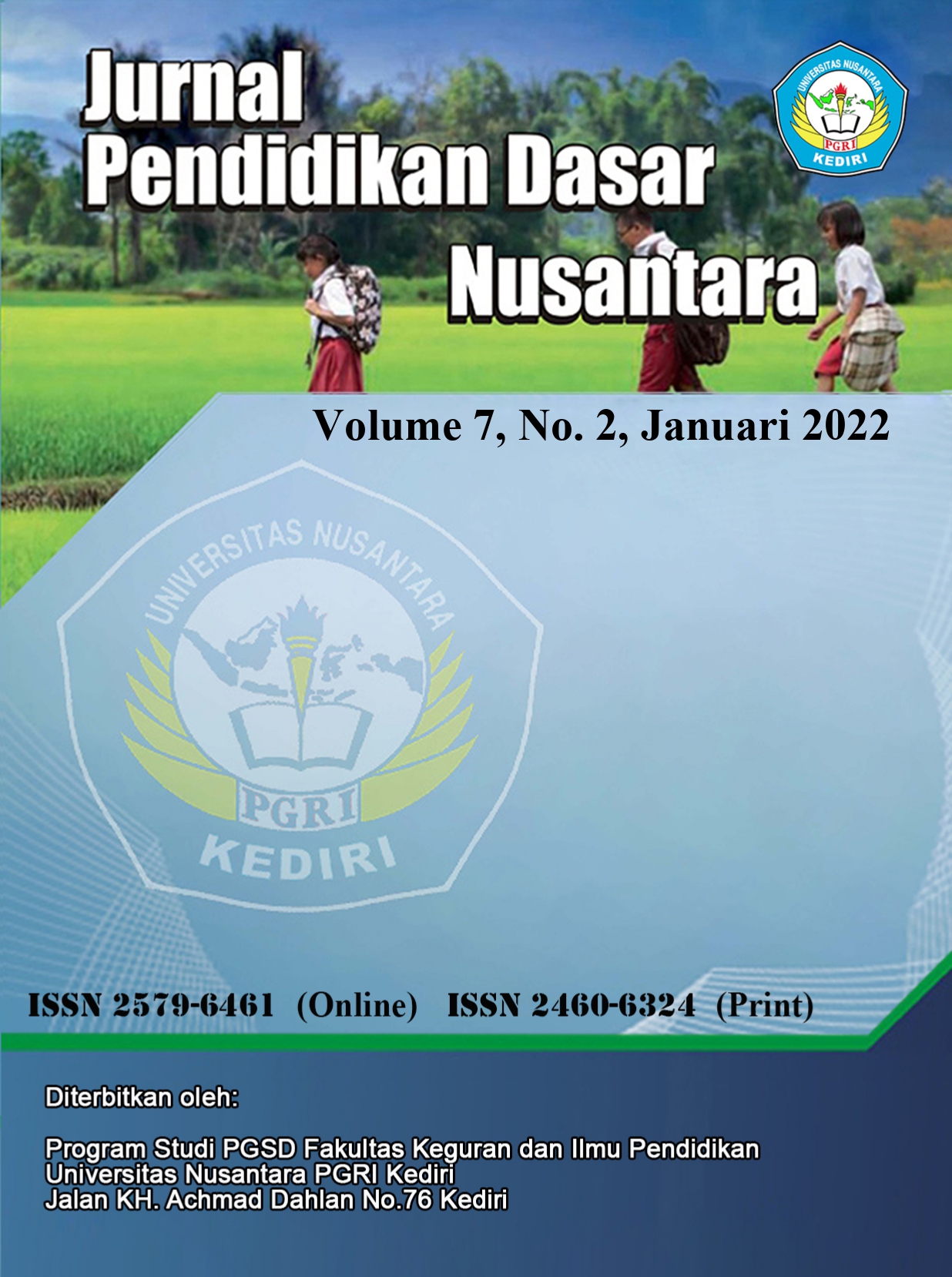Implementation of learning during the covid-19 in college
DOI:
https://doi.org/10.29407/jpdn.v7i2.15996Keywords:
Learning, covid-19 pandemic, collegeAbstract
The purpose of this study was to obtain information regarding the implementation of learning during the Covid-19 pandemic period in college. This research activity uses a type of library research which means that in obtaining data in the form of information on relevant matters from various sources such as documents, books, magazines, news, and others. The criteria for selected articles and news are those that discuss the implementation of learning during the Covid-19 pandemic in college. From the 10 sources obtained, then the most relevant were selected so that 7 articles were obtained. The results obtained in this study indicate that the implementation of learning during the Covid-19 pandemic in college can be carried out properly and effectively using online learning. Another finding is that the Covid-19 pandemic is a momentum for lecturers and students to start and familiarize online learning with various learning applications. And there are many online learning applications, but the applications that are widely used are the Google Classroom and Whatsapp applications
Downloads
References
Amiroh. (2012) Under E-Learning, Edmodo, Moodle and Schoology. (Online: Sumber http://amiroh.web.id). Diakses 17 September 2021
Arikunto, S. (2010). Prosedur Penelitian Suatu Pendekatan Praktik. Rineka Cipta.
Comerchero, Matthew. (2006). E-Learning Concepts and Technique. USA. Institute for Interactive Technologies. Bloomsburg: University of Pennsylvania.
Dewantara, J. A., & Nurgiansah, T. H. (2021). Efektivitas Pembelajaran Daring di Masa Pandemi COVID 19 Bagi Mahasiswa Universitas PGRI Yogyakarta. Jurnal Basicedu, 5(1), 367-375.
Dewi, W. A. F. (2020). Dampak Covid-19 terhadap implementasi pembelajaran daring di Sekolah Dasar. Edukatif: Jurnal Ilmu Pendidikan, 2(1), 55-61.
Kemendikbud Riset dan Teknologi. (2021). Pengumuman dalam bidang pembelajaran dan kemahasiswaan (Online: http://dikti.kemdikbud.go.id/pengumuman/ klasterisasi-perguruan-tinggi-di-lingkungan-kementerian-pendidikan-kebudayaan-riset-dan-teknologi-pada-tahun-2021/). Diakses 19 September 2021
Fitriyani, Y., Fauzi, I., & Sari, M. Z. (2020). Motivasi belajar mahasiswa pada pembelajaran daring selama pandemik covid-19. Jurnal Kependidikan: Jurnal Hasil Penelitian dan Kajian Kepustakaan di Bidang Pendidikan, Pengajaran dan Pembelajaran, 6(2), 165-175.
Fuadi, T. M., Musriandi, R., & Suryani, L. (2020). COVID-19: PENERAPAN PEMBELAJARAN DARING DI PERGURUAN TINGGI. Jurnal Dedikasi Pendidikan, 4(2), 193-200.
Kompas. (2021). Update 29 Mei; Ada 99.690 Kasus Aktif Covid-19 di Indonesia. Berita Online. https://www.kompas.com/tag/pasien-covid-19?sort=desc&page=2 diakses 29 Mei 2021. Pukul 13.00 WIB.
Menteri Pendidikan. (2020). Surat Edaran Nomor 3 Tahun 2020 Tentang Pelaksanaan Pendidikan dalam Masa Darurat CoronaVirus (COVID-19).
Moore, J. L., Dickson-Deane, C., & Galyen, K. (2011). E-Learning, online learning, and distance learning environments: Are they the same? Internet and Higher Education. https://doi.org/10.1016/jiheduc.2010.10.001.
Ningsih, S. (2020). Persepsi Mahasiswa Terhadap Pembelajaran Daring Pada Masa Pandemi Covid-19. JINOTEP (Jurnal Inovasi Dan Teknologi Pembelajaran): Kajian Dan Riset Dalam Teknologi Pembelajaran, 7(2), 124-132.
Riad, Alaa el-din Mohamed dan Haitham El-Ghareeb. (2009). Evaluation of Utilizing Service Oriented Architecture As A Suitable Solution To Align University Management Information System And Learning Management Systems. Turkish Online Journal of Distance Education, Vol. 10 (1). 4.
Rosali, E. S. (2020). Aktifitas Pembelajaran Daring Pada Masa Pandemi Covid-19 Di Jurusan Pendidikan Geografi Universitas Siliwangi Tasikmalaya. GEOSEE, 1(1).
Siahaan, S. (2003). E-Learning (Pembelajaran Elektronik) sebagai salah satu alternatif kegiatan pembelajaran. Jurnal Pendidikan dan Kebudayaan No. 042 Tahun ke-9. Mei 2003.
Singh, H. (2003). Building Effective Blended Learning Programs. Educational Technology, 43, 51-54
Sugiyono. (2012). Metode Penelitian Kuantitatif Kualitatif dan R&D. Alfabeta.
Sadikin, A., & Hamidah, A. (2020). Pembelajaran Daring di Tengah Wabah Covid-19:(Online Learning in the Middle of the Covid-19 Pandemic). Biodik, 6(2), 214-224.
Yudiawan, A. (2020). Belajar Bersama COVID 19: Evaluasi Pembelajaran Daring Era Pandemi di Perguruan Tinggi Keagamaan Islam Negeri, Papua Barat. AL-FIKR: Jurnal Pendidikan Islam, 6(1), 10-16.
Yurianto, Ahmad, Bambang Wibowo, K. P. (2020). PEDOMAN PENCEGAHAN DAN PENGENDALIAN CORONAVIRUS DISEASE (COVID-19) (M. I. Listiana
Azizah, Adistikah Aqmarina (ed.))
Downloads
Published
Issue
Section
License
Authors who publish with this journal agree to the following terms:
- Copyright on any article is retained by the author(s).
- The author grants the journal, the right of first publication with the work simultaneously licensed under a Creative Commons Attribution License that allows others to share the work with an acknowledgment of the work’s authorship and initial publication in this journal.
- Authors are able to enter into separate, additional contractual arrangements for the non-exclusive distribution of the journal’s published version of the work (e.g., post it to an institutional repository or publish it in a book), with an acknowledgment of its initial publication in this journal.
- Authors are permitted and encouraged to post their work online (e.g., in institutional repositories or on their website) prior to and during the submission process, as it can lead to productive exchanges, as well as earlier and greater citation of published work.
- The article and any associated published material is distributed under the Creative Commons Attribution-ShareAlike 4.0 International License

































